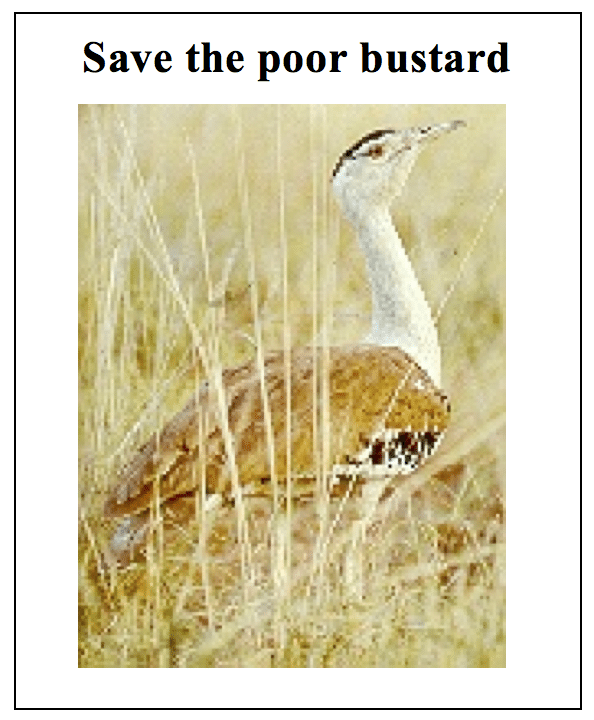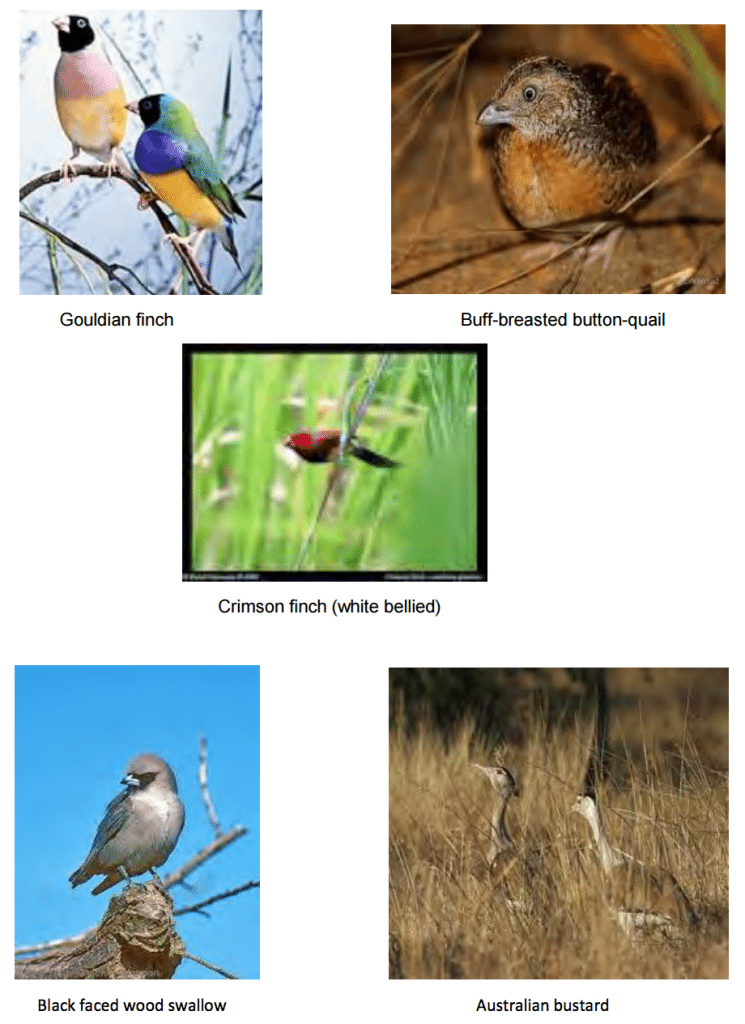 Some readers may remember conservation posters and t-shirts from the 1970s that conveyed this image and slogan.
Some readers may remember conservation posters and t-shirts from the 1970s that conveyed this image and slogan.
The poor bustard needed to be saved, but from what was not actually spelled out.
Rangeland scientist and Queensland grazier Dr Ian Beale believes the answer is clear: tree thickening.
While public debate around vegetation issues remains firmly focused on land clearing, he argues the focus should instead be on the issue of woody thickening, and its detrimental impact on biodiversity.
Bustards, as pictured, also known as plains turkeys or more simply bush chooks, are grassland dwellers, and need a mixture of open ground for grazing and vegetation to hide their young. A primary threat they face is alterations to their grassland habitat, such as invasion by woody weeds.
Plains turkeys are considered to be an indicator species, according to a Queensland Department of Agriculture “Mulga Line” article.
“If you’ve got them then things are going okay,” Dr Beale said.
Get Beef Central’s free daily news in your email inbox – click here
Dr Beale said he regularly sees around a dozen plains turkeys along cleared creek country on his grazing property at Mungallala in western Queensland, but suggests that to find out how many are really around, a burn-off is an effective way.
“We did one around 2011 on creek country,” he explained.
“They started to arrive not long after the smoke went up and the count on the last patrol just before sundown was more than 50. Fried grasshopper must be a delicacy.”
“Our area has the widespread problem of thickening of woody species, but we have an increasing number of these birds in areas where timber has been controlled,” Dr Beale said.
“One of our older district residents on a return visit noted, in the presence of our now numerous plains turkeys, that the last time he’d seen one in the area was 1935.”
Dr Beale suggests the 1970s conservation posters and t-shirts should now be returned, but this time with the words: “Save the poor bustard, Stop tree thickening!’
Govt ignoring impact of thickening on biodiversity
Former Queensland Government ecologist Dr Bill Burrows also questioned the Queensland Government’s failure to acknowledge woody thickening and its impact on biodiversity, in his submission to the recent inquiry into the proposed tree clearing legislation.
“Unfortunately government has chosen to focus solely on land clearing impacts on biodiversity, while assiduously ignoring the impacts of the far greater extent of vegetation thickening,” Dr Burrows wrote.
“Much of the research on impacts of woody thickening has focussed on livestock production and ecosystem processes such as soil erosion and nutrient cycling.
“Although few studies have addressed the impact of woody thickening on biodiversity, it is suggested that native species adapted to open grassy ecosystems may be disadvantaged or even face local extinction as woody cover increases.”

Some iconic Queensland fauna threatened by increased tree/shrub thickening in woodlands and forests. Source: Dr Bill Burrows’ submission to Qld veg management inquiry 2016.
Qld Govt says clearing a major risk
On Saturday in Townsville Queensland environment Minister Dr Steven Miles announced a review into the risks posed by tree-clearing, after Queensland’s Species Technical Committee (STC) recommended 21 of the 29 species of flora and fauna it reviewed be re-listed to a more threatened protection status.
“Action needs to be taken before more of Queensland’s world-famous plants and animals are wiped out,” Dr Miles said.
“This is a long term trend in Queensland, with an increasing number of our native plants and animals being put more and more at risk of slipping toward extinction.
“The threats include habitat destruction from clearing, predation and competition by introduced species, introduced diseases and climate change.
“Today I’m announcing I have written to the Species Technical Committee requesting an impartial, scientifically sound report on the role of land clearing in the decline of native wildlife,” he said.
The STC’s membership includes scientific experts from universities, the Department of Environment and Heritage Protection; Department of Science, Information Technology, Innovation and the Arts, and the Commonwealth.
“What makes the committee’s latest findings even more disturbing, is that they come just days after the Palaszczuk Government released new data confirming tree clearing is continuing at unacceptably high levels in Queensland,” Dr Miles said.
“The latest SLATS report reveals almost 300,000 hectares per year have been cleared since the reckless LNP trashed Labor’s responsible tree clearing laws in 2013.
“That is why we want to introduce effective and balanced land clearing laws that will protect the environment, and our unique flora and fauna,’’ he said.
